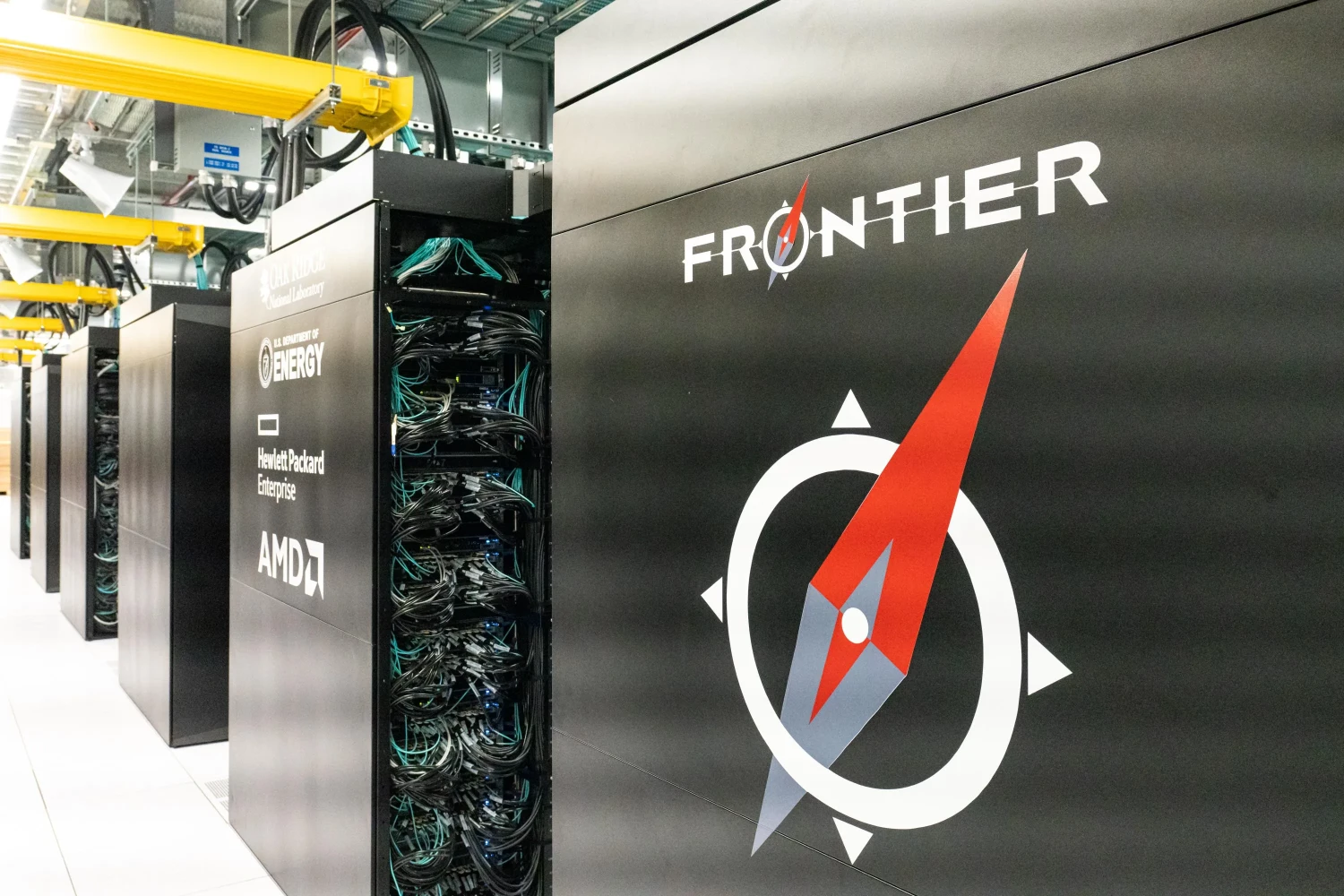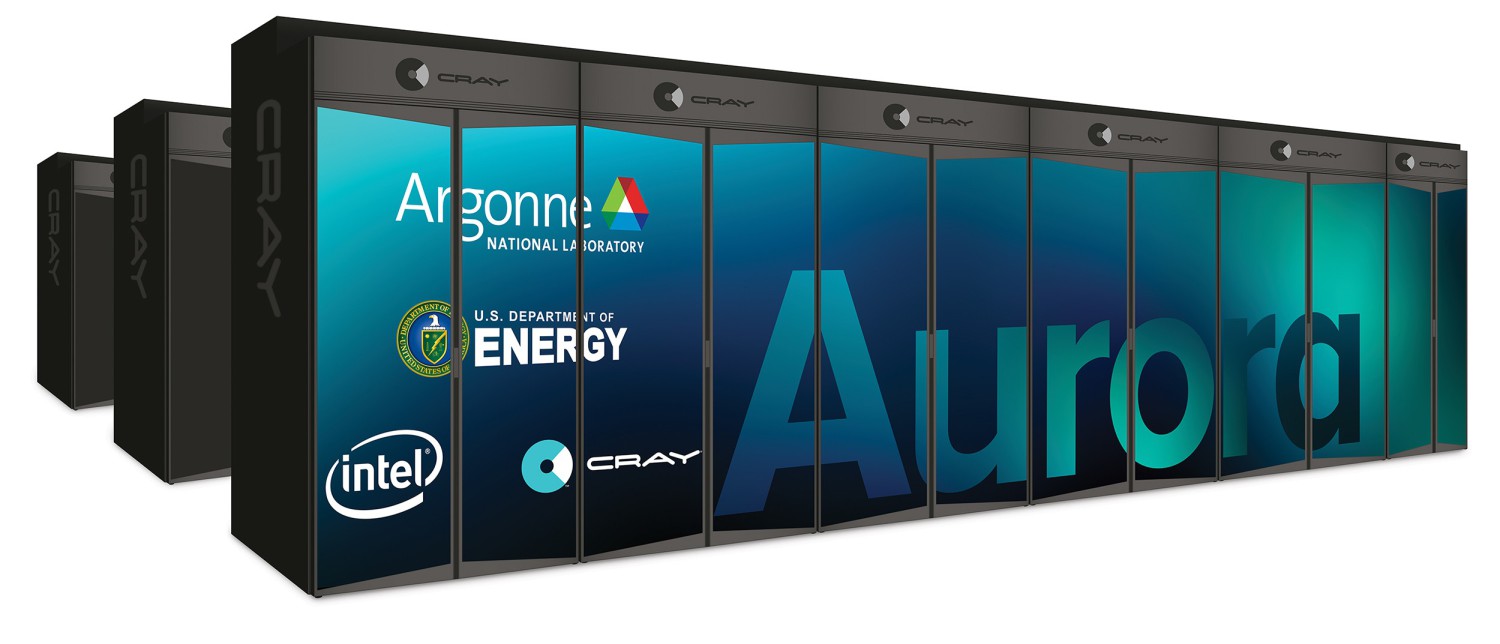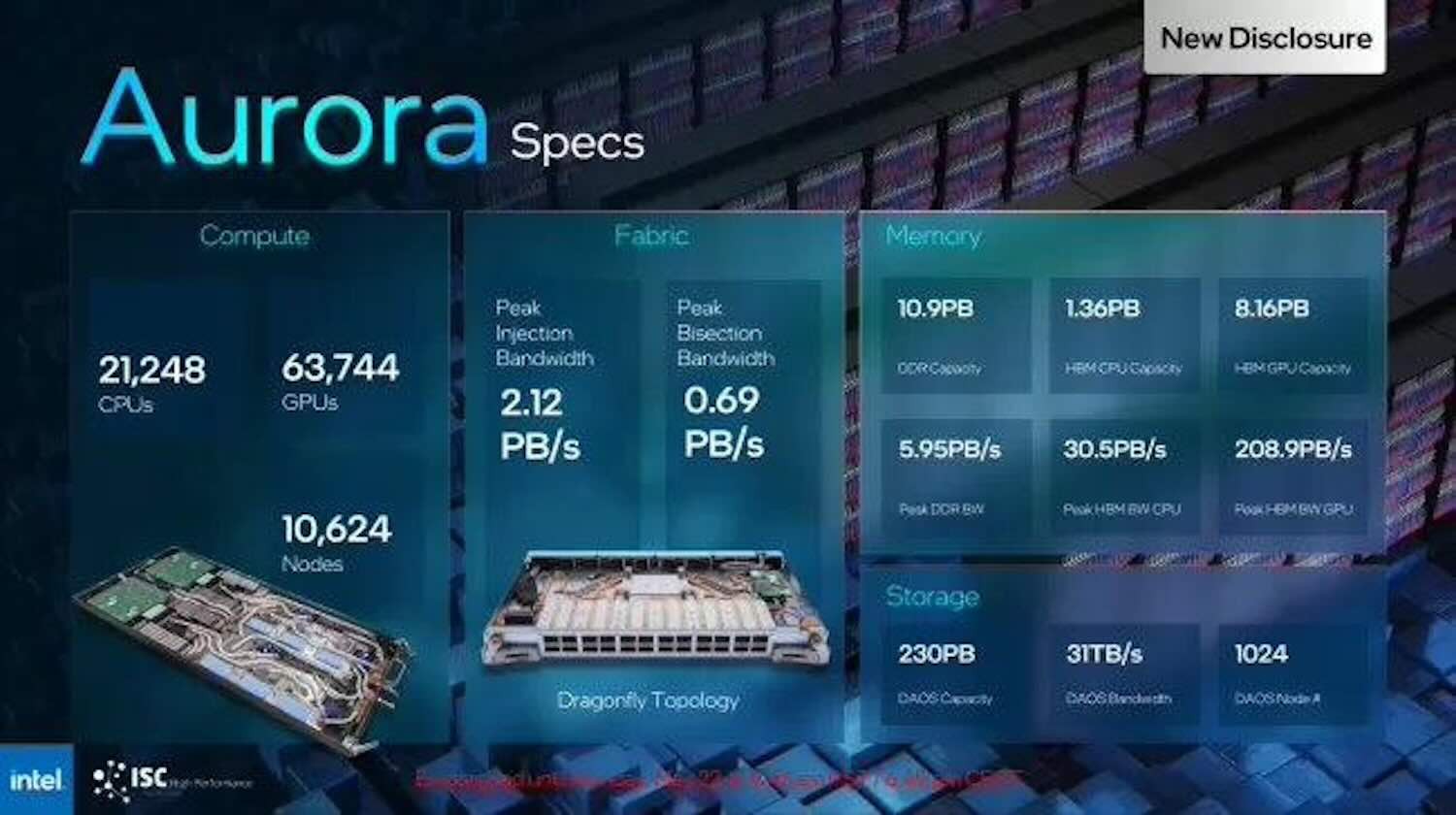On November 14, 2023, the TOP500 list of the world's most powerful supercomputers was revealed. The Frontier supercomputer continues to hold the first position, being the only exascale supercomputer publicly disclosed.
The TOP500 list also saw the addition of five new or upgraded supercomputers, causing significant changes in the top 10 rankings. Japan's Fugaku dropped to the fourth position, while Aurora from the Argonne National Laboratory and Eagle on the Microsoft Azure cloud platform claimed the second and third positions, respectively.

The Frontier supercomputer, located at Oak Ridge National Laboratory (ORNL) in Tennessee, USA, continues to maintain its leading position with an HPL score of 1.194 EFlop/s.
Frontier utilizes the AMD EPYC 64C 2GHz processor, based on the latest HPE Cray EX235a architecture. The system comprises a total of 8,699,904 CPU and GPU cores. Additionally, Frontier boasts an energy efficiency rating of 52.59 GFlops/watt and has the capability for data transfer through HPE's Slingshot 11 network.

The Aurora supercomputer at the Argonne Leadership Computing Facility in Illinois, USA, achieved an HPL score of 585.34 PFlop/s, securing the second position on the rankings (previously held by Fugaku). However, this number for Aurora is only a part of the planned final scale and was disclosed under the current status. It is expected that, once fully upgraded, Aurora will surpass Frontier with a peak performance of 2 EFlop/s.
Aurora is built on the Intel Exascale Computing processors (Intel's numerical exascale computing chip), utilizing the Intel Xeon CPU Max processors and Intel Data Center GPU Max accelerators, interconnected through the HPE Slingshot-11 network.

In the TOP500 list of the world's most powerful supercomputers released on November 14, 2023, Frontier continues to maintain its position as the number one supercomputer, being the only publicly disclosed exascale-level supercomputer.
The rankings saw significant changes in the top 10 due to the addition of five new or upgraded supercomputers. Fugaku from Japan dropped to the fourth position, while the second and third positions were occupied by Aurora from the Argonne National Laboratory and Eagle installed in the Microsoft Azure cloud, respectively.
Frontier, located at the Oak Ridge National Laboratory (ORNL) in Tennessee, USA, led with an HPL score of 1.194 EFlop/s. It utilizes AMD EPYC 64C 2GHz processors based on the latest HPE Cray EX235a architecture, with a total of 8,699,904 CPU and GPU cores. Frontier also achieved an energy efficiency rating of 52.59 GFlops/watt, capable of data transfer via the HPE Slingshot 11 network.
Aurora, situated at the Argonne Leadership Computing Facility in Illinois, USA, secured the second position with an HPL score of 585.34 PFlop/s. However, this figure for Aurora represents only half of its planned final scale, with an expected peak performance of 2 EFlop/s after completion. Aurora is built on the Intel Exascale Computing processors, utilizing Intel Xeon CPU Max processors and Intel Data Center GPU Max accelerators, interconnected through the HPE Slingshot-11 network.
Eagle, ranking third, is installed on the Microsoft Azure Cloud in the USA. It is the highest-ranking cloud-based system on TOP500. Microsoft's NDv5 system achieved an HPL score of 561.2 PFlop/s, based on Intel Xeon Platinum 8480C processors and NVIDIA H100 accelerators.
Fugaku slipped from the second to the fourth position, having previously held the top spot from June 2020 to November 2021. Located in Kobe, Japan, Fugaku achieved an HPL score of 442.01 PFlop/s, remaining the highest-ranked system outside the USA.
The LUMI supercomputer at the EuroHPC/CSC in Finland secured the fifth position with an HPL score of 379.70 PFlop/s. LUMI is the largest supercomputer in Europe and has undergone multiple upgrades, maintaining its position at the forefront of the rankings.
In summary, China and the USA dominate the majority of positions in the TOP500 list, with the USA increasing its lead from 150 systems in the previous ranking to 161 systems in this release, while China decreased from 134 systems to 104 systems.
Additionally, the top position in the GREEN500 ranking remains with Henri at the Flatiron Research Institute in New York, USA. Henri achieved an energy efficiency rating of 65.40 GFlops/watt, with an HPL score of 2.88 PFlop/s. Henri is a Lenovo ThinkSystem SR670 server equipped with Intel Xeon Platinum processors and NVIDIA H100 GPUs, ranking 293rd on the TOP500 list.
Here is the ranking of the world's most powerful supercomputers in the TOP10:
The TOP500 list also saw the addition of five new or upgraded supercomputers, causing significant changes in the top 10 rankings. Japan's Fugaku dropped to the fourth position, while Aurora from the Argonne National Laboratory and Eagle on the Microsoft Azure cloud platform claimed the second and third positions, respectively.

Frontier utilizes the AMD EPYC 64C 2GHz processor, based on the latest HPE Cray EX235a architecture. The system comprises a total of 8,699,904 CPU and GPU cores. Additionally, Frontier boasts an energy efficiency rating of 52.59 GFlops/watt and has the capability for data transfer through HPE's Slingshot 11 network.

The Aurora supercomputer at the Argonne Leadership Computing Facility in Illinois, USA, achieved an HPL score of 585.34 PFlop/s, securing the second position on the rankings (previously held by Fugaku). However, this number for Aurora is only a part of the planned final scale and was disclosed under the current status. It is expected that, once fully upgraded, Aurora will surpass Frontier with a peak performance of 2 EFlop/s.
Aurora is built on the Intel Exascale Computing processors (Intel's numerical exascale computing chip), utilizing the Intel Xeon CPU Max processors and Intel Data Center GPU Max accelerators, interconnected through the HPE Slingshot-11 network.

The rankings saw significant changes in the top 10 due to the addition of five new or upgraded supercomputers. Fugaku from Japan dropped to the fourth position, while the second and third positions were occupied by Aurora from the Argonne National Laboratory and Eagle installed in the Microsoft Azure cloud, respectively.
Frontier, located at the Oak Ridge National Laboratory (ORNL) in Tennessee, USA, led with an HPL score of 1.194 EFlop/s. It utilizes AMD EPYC 64C 2GHz processors based on the latest HPE Cray EX235a architecture, with a total of 8,699,904 CPU and GPU cores. Frontier also achieved an energy efficiency rating of 52.59 GFlops/watt, capable of data transfer via the HPE Slingshot 11 network.
Aurora, situated at the Argonne Leadership Computing Facility in Illinois, USA, secured the second position with an HPL score of 585.34 PFlop/s. However, this figure for Aurora represents only half of its planned final scale, with an expected peak performance of 2 EFlop/s after completion. Aurora is built on the Intel Exascale Computing processors, utilizing Intel Xeon CPU Max processors and Intel Data Center GPU Max accelerators, interconnected through the HPE Slingshot-11 network.
Eagle, ranking third, is installed on the Microsoft Azure Cloud in the USA. It is the highest-ranking cloud-based system on TOP500. Microsoft's NDv5 system achieved an HPL score of 561.2 PFlop/s, based on Intel Xeon Platinum 8480C processors and NVIDIA H100 accelerators.
Fugaku slipped from the second to the fourth position, having previously held the top spot from June 2020 to November 2021. Located in Kobe, Japan, Fugaku achieved an HPL score of 442.01 PFlop/s, remaining the highest-ranked system outside the USA.
The LUMI supercomputer at the EuroHPC/CSC in Finland secured the fifth position with an HPL score of 379.70 PFlop/s. LUMI is the largest supercomputer in Europe and has undergone multiple upgrades, maintaining its position at the forefront of the rankings.
In summary, China and the USA dominate the majority of positions in the TOP500 list, with the USA increasing its lead from 150 systems in the previous ranking to 161 systems in this release, while China decreased from 134 systems to 104 systems.
Additionally, the top position in the GREEN500 ranking remains with Henri at the Flatiron Research Institute in New York, USA. Henri achieved an energy efficiency rating of 65.40 GFlops/watt, with an HPL score of 2.88 PFlop/s. Henri is a Lenovo ThinkSystem SR670 server equipped with Intel Xeon Platinum processors and NVIDIA H100 GPUs, ranking 293rd on the TOP500 list.
Here is the ranking of the world's most powerful supercomputers in the TOP10:
